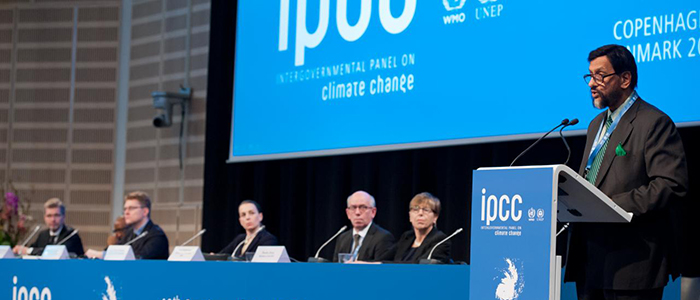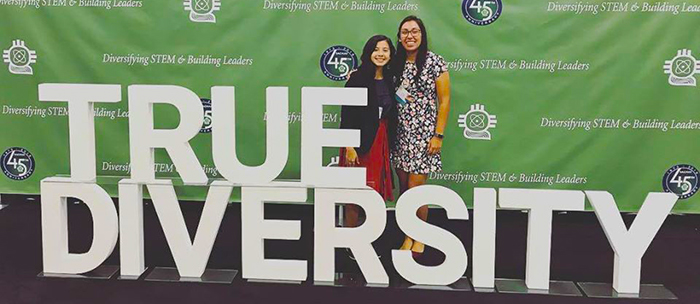[vc_row][vc_column][vc_column_text]
From VT News | May 21, 2020
The ongoing Climate Action Commitment revision process is not only generating recommendations that will help guide Virginia Tech’s sustainable future, it is also fostering a dynamic ecosystem of university and community members collaborating to collectively tackle this important challenge.
This network of nearly 125 students, faculty, and staff from across operations, academics, and research, and community representatives continues to be highly engaged in moving the revision process forward – in a fully virtual environment.
Approved initially in 2009 by the Virginia Tech Board of Visitors, the Virginia Tech Climate Action Commitment serves as the university’s guiding framework around sustainability and energy efficiency in campus operations, facilities, curriculum, and research. In late 2019, President Tim Sands called for its renewal and revision to ensure the most stringent climate and sustainability standards are implemented as Virginia Tech continues to grow and seeks to be a leader in environmental stewardship.
Despite the shift to a remote campus setting due to COVID-19, the working group leading the update process is on track to deliver final revision recommendations to Senior Vice President and Chief Business Officer Dwayne Pinkney within the next month.
Requiring exceptional collaboration, community input, and knowledge transfer under a tight timeframe, when it comes to the revision process and delivering recommendations, what has been the recipe for success?
“The same ingredients that underscore effective in-person group interactions are essential in virtual environments,” said Todd Schenk, assistant professor of urban affairs and planning within the College of Architecture and Urban Studies and vice chair of the Climate Action Commitment revision working group.
“One key ingredient is the need for a shared commitment among participants. In the example of the Climate Action Commitment revisions, all participants are passionate about a more sustainable Virginia Tech. That does not, however, mean we agree on everything. A second key ingredient is that we are dedicated to constructive deliberations and are respectful of each other’s unique vantage points and expertise. We all also agree that accountability is essential to stay on track.”
Strong coordination has also been critical in the process, especially in delivering opportunities for the greater university, local community, and alumni to get involved and share their voices in the revision efforts.
With 12 subcommittees meeting weekly to formulate recommendations, organization, and communication among the working group and subcommittees has been vital.
Coordination has been central to the efforts of the Community Engagement Subcommittee in particular. When plans for a large scale in-person campus convening had to be adapted in light of the governor’s stay at home order, subcommittee members sprang into action to organize a series of 12 Zoom convenings.
The sessions, attended by nearly 200 stakeholders from the university, alumni, and regional communities, and beyond, offered attendees the opportunity to get up-to-date on revision efforts and the chance to share their thoughts on a variety of sustainability topics through well-coordinated Zoom breakout rooms.
“Being an active member of my community is part of life’s purpose. I am proud to call Blacksburg home and of the many years I spent at Virginia Tech. The unique opportunity to participate in the Climate Action Commitment revision efforts and the Zoom convenings to help implement sustainable change is rewarding. As a community member and alumna, it is also gratifying to be able to share my knowledge and experiences from farming, teaching, and being a mother and veterinarian,” shared Sarah Haring, who earned both a Doctor of Veterinary Medicine in 2016 and a Master of Public Health in 2020 from the Virginia-Maryland College of Veterinary Medicine.
An unwavering commitment to the cause, collaboration, and coordination will be essential continuing to move Virginia Tech’s environmental stewardship efforts forward once the renewed Climate Action Commitment is live. One of the last tasks of the current Community Engagement Subcommittee is to recommend how to keep these important conversations going.
“It has been incredible to engage with so many stakeholders from a range of disciplines and work toward a common goal. Even during the pandemic, our Community Engagement Subcommittee has stayed in almost daily communication,” said Heidi Hahn, a rising junior majoring in environmental policy and planning within the College of Architecture and Urban Studies and minoring in green engineering within the College of Engineering.
Click here to learn more about the Climate Action Commitment revision process. The latest updates will also be shared via VT News.
Related links:
[/vc_column_text][/vc_column][/vc_row][vc_row][vc_column][vc_separator style=”shadow”][/vc_column][/vc_row]







